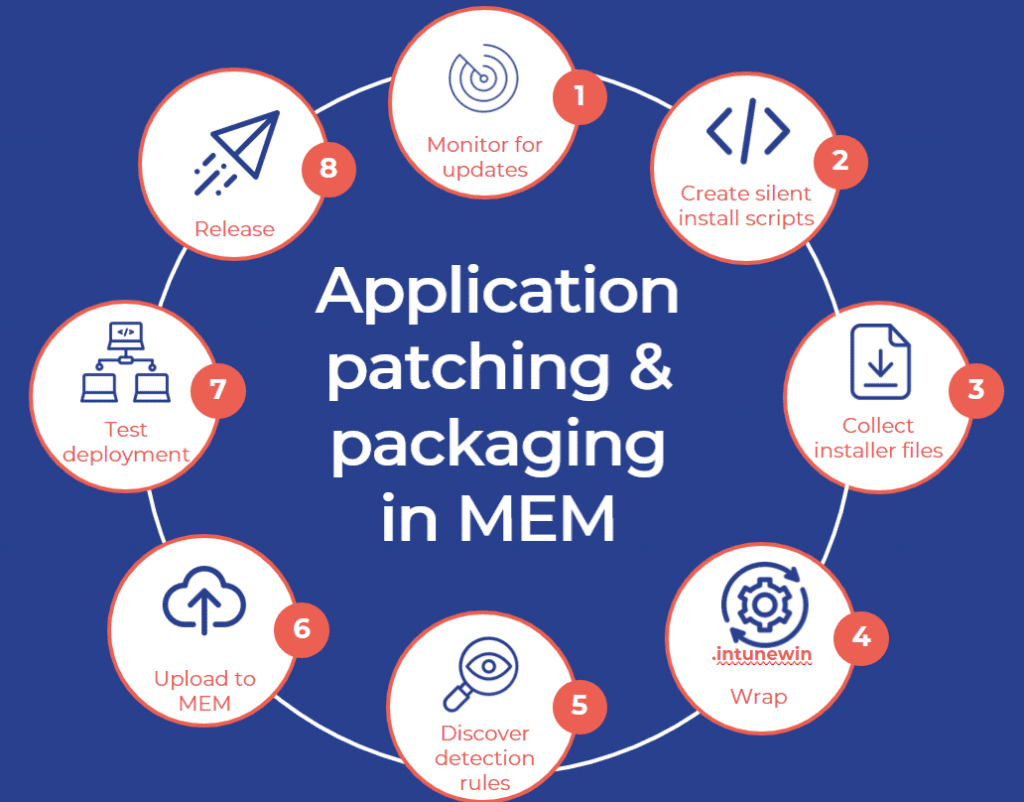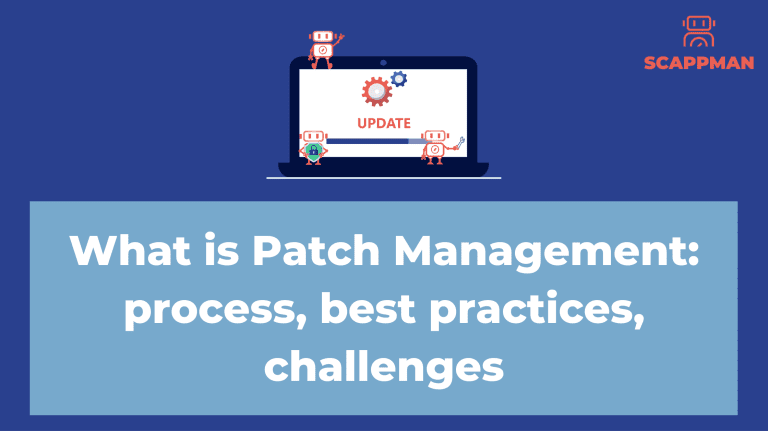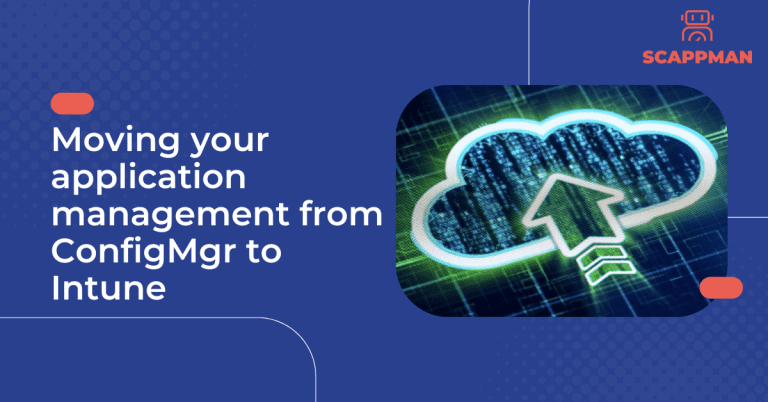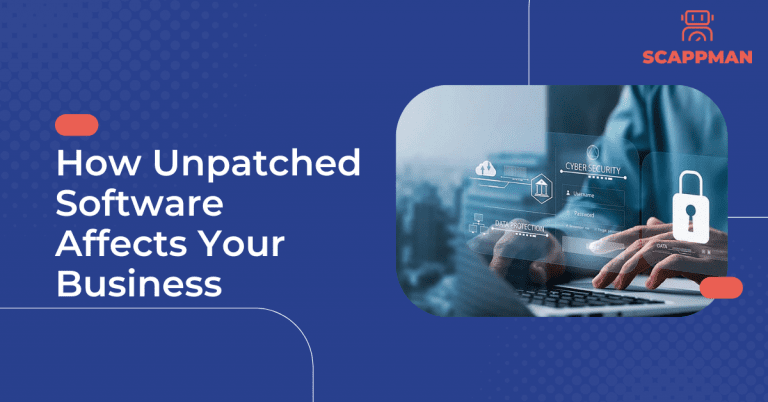Patch management is the practice of deploying software updates, or “patches”, to protect a system or network from vulnerabilities. Patch management plays a crucial role in IT system lifecycle management and vulnerability management.
A patch is an update provided by a software vendor to fix a technical issue or remediate a security vulnerability. Patches can also include new features and functionalities for the software. Patches secure, upgrade and optimise software (applications and OS).
In this blog, we’ll cover everything you need to know about patch management, including best practices and challenges of patch management.
Types of patches
There are 3 common types of patches:
- Security patch. One of the main reasons why you should implement patch management is to secure and protect your organization from data breaches. The majority of cyberattacks happened because of outdated software. Patches are created to cover up newly discovered security holes. Unfortunately, these security holes are discovered after they have been exploited.
- Bug-fixing patch. These patches fix application errors and bugs. They can have a big impact on your organization. For that reason, efficient patch management, which ensures that your applications are updated with the most recent and bug-free version, can provide immediate value for your company.
- Performance & feature patch. These patches can make the experience of using the applications better, making them load faster. Also, with these patches, software vendors add new features that make using the applications easier and faster.
Process of patch management
Patch management is a complex and never-ending process. Here are 8 stages of the patch management cycle from discovering an application update to deployment to all users.
o update an application firstly you should detect the new version of the application, download and test it before pushing it to the users. If the update is secure and works, you should create a package with a new version of the app. For Microsoft Intune, you should wrap the file into .intunewin, upload it to Intune and deploy it to the assigned users. As soon as you find out that there is a new update available, you must go through the whole process again. And again.

Benefits of patch management
A well-implemented patch management system can offer many benefits to an organization, including:
- Improved security: Patch management can help to ensure that all devices in an organization are up to date with the latest security patches, which can help to reduce the risk of a security breach.
- Reduced downtime: By keeping devices up to date with the latest patches, a patch management system can help to minimize the amount of downtime that may be caused by unpatched devices.
- Increased compliance: Organizations that are compliant with industry regulations may find that a patch management system helps them to stay compliant by ensuring that all devices are kept up to date with the latest patches.
Challenges of patch management
Patch management is one of the most important, but challenging aspects of your job. Here are the 3 biggest challenges of patch management.
- Time-consuming According to the Ivanty report (2021), 71% of IT and security professionals find patching complex and time-consuming. Coming back to patching cycle, you must continually identify and assess vulnerabilities, monitor and test patches, and deploy the patches to their systems. Based on the Ivanty survey results, IT & security professionals spend 53% of their working time each month detecting and prioritizing vulnerabilities and 19% testing patches. The biggest problem here is how to find out if there is an update available. Many people think of something like Patch Tuesday with Microsoft. However, it’s not like that in most cases – there is no system. And let’s consider this: for example, Chrome releases a full OS update about every four weeks. Minor updates, such as security fixes and software updates, happen every 2–3 weeks. Only for patching Google Chrome, an IT specialist must go through the patch cycle 2-3 times a month. But what about other applications? On average, a company uses 110 applications (Statista, 2021). It’s difficult to calculate how much time IT admins should spend on patching all the software to prevent the companies from breaches.
- Patches can break something
72% of managers are afraid that applying security patches right after release could “break stuff.” That’s true: there is a risk that some things can go wrong with updating software. This can occasionally happen, even if the vendor extensively tested a patch before a patch was released to the public. Sometimes, the reason for a patch failure is that you install the patch and forget to reboot the system. To address this challenge and not “break everything,” you must test the updates first in a test environment and then deploy them.
3. Do I have to patch everything?
Implementing an inventory management solution can cause another challenge – only highly prioritized vulnerabilities will be patched. This doesn’t solve the problem entirely – your company’s endpoints are still at risk, and there is no guarantee that you won’t be hacked.
Read more about the challenges of patch management: Top 5 challenges of patch management
Patch management best practices
How can you improve your patch management process? Fortunately, there are a number of solutions on the market that can make patch management in your organization effective and address the challenges. Below are some best practices to consider for implementation.
- Create an inventory list of software used in your organization
A list of all software, operating systems and devices the company uses is a vital piece of your patch management process. If you have a clear overview of all your endpoints and software installed, you know what you have to protect. With Windows Autopatch it became easier to patch Microsoft products, but you still must patch third-party apps like 7-zip, Adobe and Chrome yourself. Because if you are not patching, this will create multiple attack vectors into your endpoints.
Read more about Windows Autopatch here: Getting started with Windows Autopatch: step-by-step guide
2. Monitor application releases and updates
With so many applications installed (and so little time), tracking all software updates is critical. In the case of Microsoft products, it’s easy – on Patch Tuesday the second Tuesday of each month, Microsoft releases large patches for Windows OS, Microsoft Office and other Microsoft software. But for third-party apps – not so much. Some software vendors publish updates and send email notifications to administrators.
3. Test patches before deploying them to all users
Before deploying a patch, it’s important to test it in a testing environment. This allows you to verify that the patch does what it is supposed to do and doesn’t break anything else. It also gives you time to fix any problems that may arise before the patch goes live.
Read more about patch management best practices: 6 patch management best practices
Automated patch management
Nowadays, organizations must continuously adapt to changes in order to maintain a competitive edge. This is especially true in the world of information technology, where new vulnerabilities are discovered on a regular basis. In order to protect an organization’s IT infrastructure from these vulnerabilities, it is necessary to deploy patches and updates as soon as they are made available.
Manual patch management can be a time-consuming and error-prone process. It can also be difficult to track all of the patches that need to be applied to an organization’s systems. This is where automated patch management comes in handy. Automated patch management solutions can help organizations keep track of all of the patches that need to be applied, and they can automate the process of deploying patches and updates.
That’s why Scappman should be a part of patch management in your company.
Automatically updating all your applications, you save plenty of time that you can spend on other important tasks. You don’t need to track all the updates available, prioritize and test them. Scappman will do this job for you.
Want to see, how you can automate the update process of your third-party applications? Jump on the call with Scappman.




